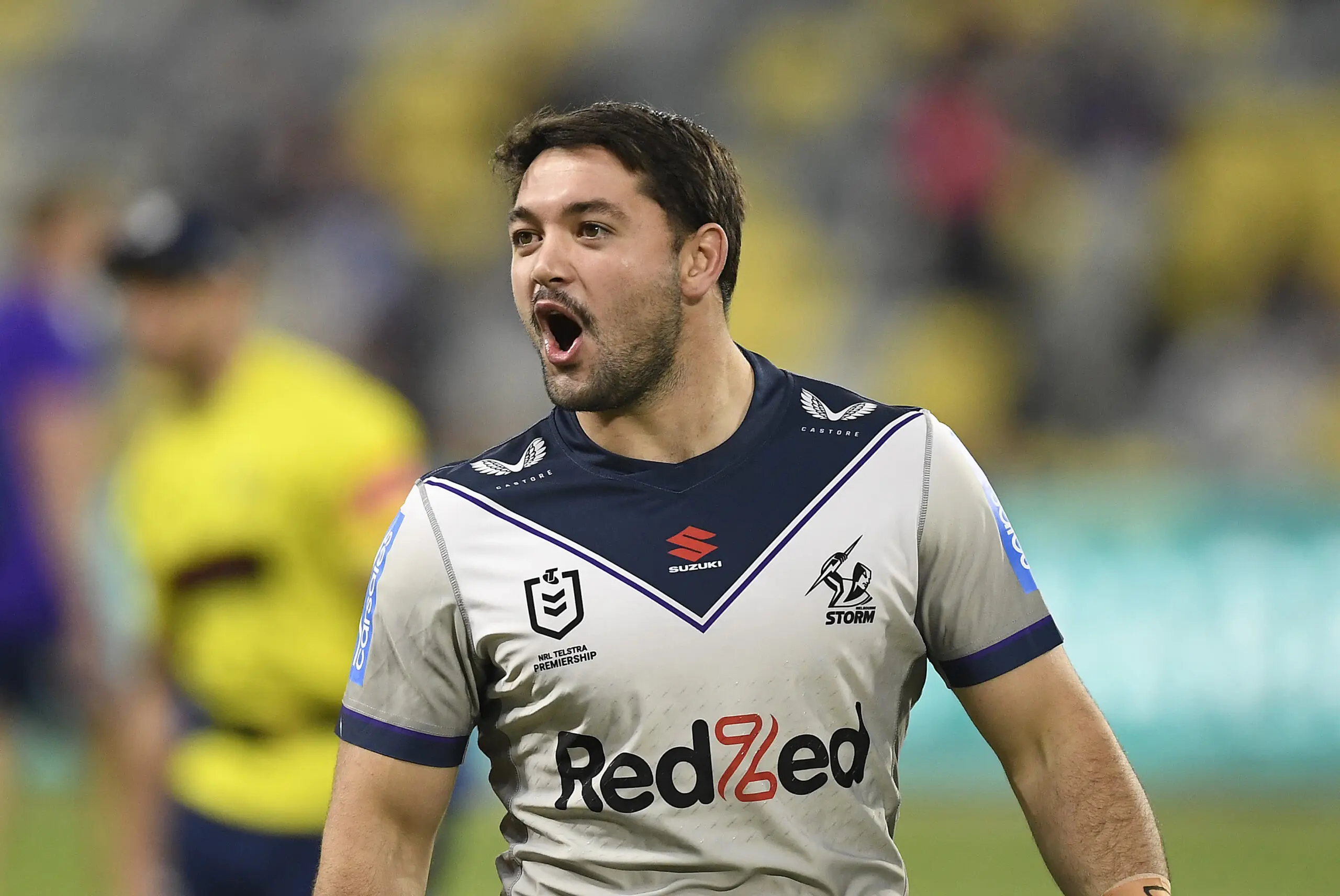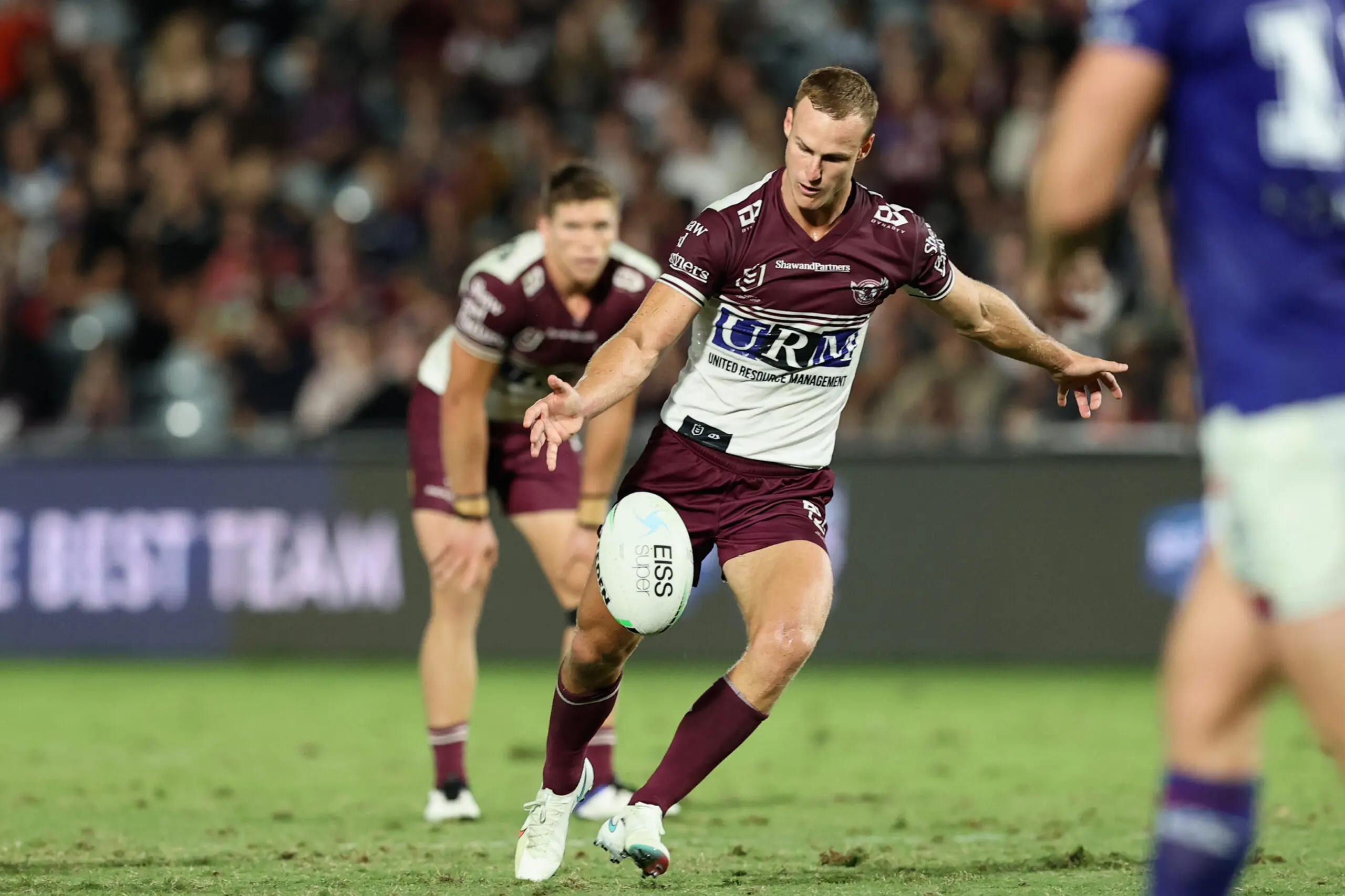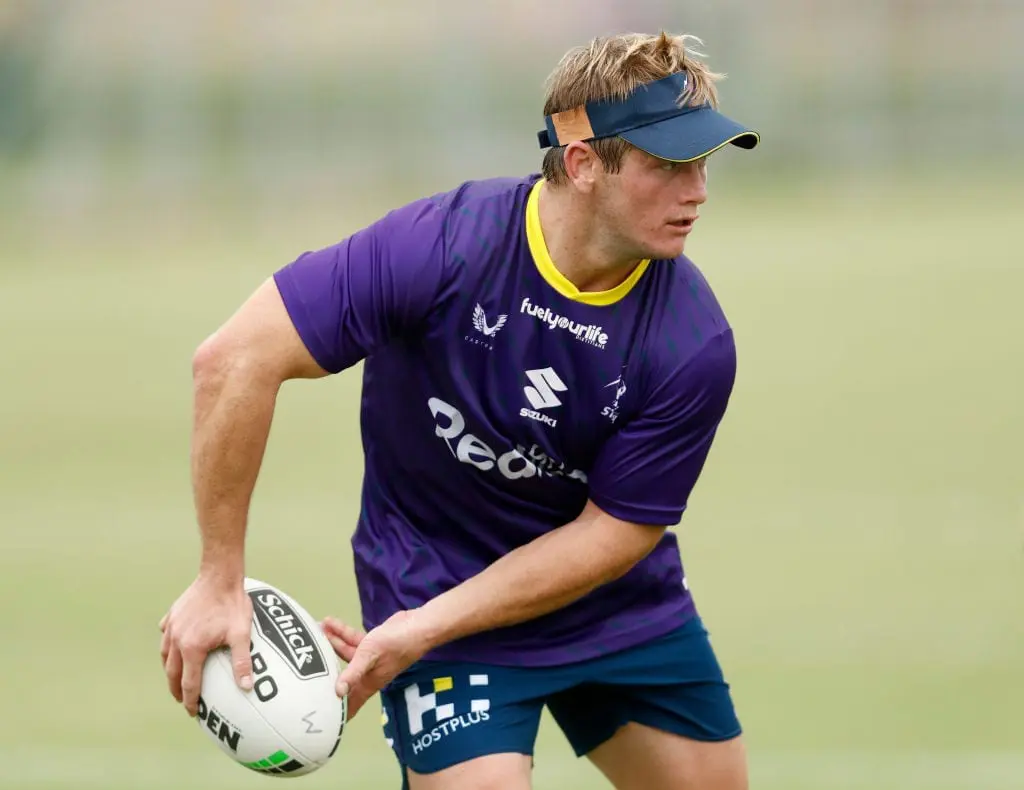Transfers and the player market have long been a talking point amongst NRL fans and the media, however the discussions have become even louder in the past 18 months.
In the recent off-season, we have seen a number of players sign with other clubs despite having a contract in place for another season. For the 2023 season, there is already confirmation Luciano Leilua is off to the Cowboys, Isaiah Papali’i to the Tigers, Josh Hodgson to the Eels and superstar hooker Brandon Smith to the Roosters among plenty of other moves.
Smith’s signing in particular was surrounded by controversy and anger within the Melbourne Storm club after he spoke on YKTR’s podcast about his desire to play for the Roosters whilst also claiming the Storm have a “drinking culture”.
Melbourne Storm GM Frank Ponissi slammed Smith’s comments at the time saying “The whole podcast I found disappointing…he’s a contracted player and he'll be given an opportunity to show he really wants to be here."

There were even suggestions Smith may seek an early release from the club as tensions rose, which is obviously less than ideal for a team that is once again going to be fighting for premiership glory.
What the Smith saga, along with all of the other pre-mentioned future signings, proves is that a massive overhaul is desperately needed in the transfer and player market side of things.
Sure it all makes for great headlines and keeps footy fans talking, however clubs and their fans will no doubt be concerned that these players possibly already have one foot out the door.
With all of that being said, here are some problem areas with the current system and ideas on how to fix them
A Dedicated Transfer Window
For years we have seen player signing rumours plastered across social media and various NRL talk shows, such as NRL 360, from pre-season all the way through to the grand final.
Whilst this is no doubt a dream for these talk shows and their ratings - rugby league fans have rapidly grown tired of hearing whispers that their favourite players are possibly going to be wearing other colours next season.
Especially when your team might be fighting for a place in the finals or even top 4. This might seem like only innocent rumours however they have the ability to cause unrest amongst teams and possibly derail an entire season.
A recent well-documented example is the Daly Cherry-Evans backflip saga from 2015. In March 2015 Cherry-Evans signed with the Gold Coast Titans on a four-year deal starting in the 2016 season.
Soon after, the whispers started that ‘DCE’ was considering backflipping on his deal to remain at Manly. Rumours would continue for almost four months, all the way up until June 2015 where Cherry-Evans finally confirmed his intentions to stay at Manly for life.

This situation not only affected the Gold Coast’s season as they slumped to a 14th place finish, but also had a negative impact on Manly who finished 9th and missed the finals for the first time since 2005.
Examples like these show why most other major sporting codes in the world have a dedicated period for player signings to occur, usually during the off-season to avoid distractions.
Leagues such as the NBA in America, who stipulate that teams must wait until the free agency period (which usually runs from August-October) to sign off-contract players to deals.
The NRL must look to introduce something similar, to avoid these scandals overshadowing the actual rugby league being played, which is what fans are ultimately interested in.
A simple fix for the game would be a player transfer window being brought in running from mid-October (after the grand final) until Christmas break, meaning that clubs have their rosters finalised when players return to training in the New Year.
A Loan System
Loaning players has long been an ignored concept by the NRL. That was until we saw it becoming more common during the COVID crisis in 2020 which saw players sitting out due to positive test results and not joining the bubble.
Melbourne hooker Harry Grant was waiting in the wings behind both Cameron and Brandon Smith, eagerly awaiting a taste of first grade which the Storm could not provide. However, the Wests Tigers could promise him a starting gig for the season with Melbourne agreeing to loan him to the Tigers for the entire 2020 season.

This ended up benefiting both Melbourne and the Tigers as the starting role gave Harry first-grade experience ready to return to the Storm in 2021, whilst the Tigers had an Origin-calibre hooker on their books for the whole season.
Loaning was expected to become a common practice after this however it has since been foolishly forgotten about and pushed to the back of the closet.
It needs to be desperately revived especially as COVID and isolating could wreak havoc on club rosters in 2022 and beyond.
Trades
Rugby league fans - have you often looked at your team’s roster and seen a glaringly obvious weakness in one position whilst you have an overflow of players in another?
This could be easily amended with the introduction of a “trading” system seen in the NBA and NFL which allows teams to trade players with each other to fix flaws in their team list.
Teams with a promising youngster sitting in reserve grade stuck behind an Origin player could have high trade value for another team needing assistance in that player's position. That team gets their man while the other team also gets a player in return.
These are just a few of many simple changes the NRL could make to the player transfer system to bring it into the 21st century and in line with other professional sporting codes across the globe.
With COVID still lurking and fans growing more restless the time is now for the decision-makers to act.
Andrew Abdo and Peter V’landys - it’s over to you.







The most obvious (and I believe, effective) change to the existing arrangement would be to copy the professional soccer leagues and introduce paid transfers.
1 What gets transferred is the player’s _registration_. This has the happy knock-on effect that if a player walks out on a club, mid-contract, to play Union or American Football, then when he gives up and comes back to the NRL his old club still “owns” the registration, so his new club of choice have to pay the team he deserted.
2 If the player wants to leave mid-contract, he tells the club. His agent finds him something he likes, the new club pays a transfer fee to the old club, the payer’s contract with the old club is cancelled, and he signs a contract with the new club. He doesn’t get any of the transfer fee, because he initiated the transfer. (This encourages players to stay with their existing club, not chase every possible dollar, because they lose their part of the transfer fee).
3 If the club wants to move on a player, they advise other NRL and Super League clubs that they are open to a deal. The old club and a new one agree a transfer fee, and the player receives part of that fee, as compensation, because he didn’t initiate the movement.
4 If two clubs agree a (club-initiated) transfer deal and the player refuses to go, he can stay with the existing club and get paid, until the end of his contract. At the end of the contract the club still holds the registration, so he can’t just walk away to another club of his choice.
5 Clubs can, and do, offer “free transfers” for a player they want to move on, or for a player at the end of his contract if they don’t want to offer him a new contract. (The second case is typical for a guy who has played a long time for the club and who wants an extra season somewhere else, to finish his career. Rather than sell his registration, the club will give him a free transfer, so he can choose where he wants to go.)
Paid transfers can work with a salary cap. The NRL could set a limit (say two million a season – just to choose a number). A club can spend up that figure – nett of receipts from players it sells – but no more. This would prevent rich clubs buying the registrations of all the best players. However, this also means that a club that is adept at developing youngsters and bringing them up NRL standard, then selling them, can make a tidy profit and have a war chest to be able to approach (say) Manly to transfer Tommy Turbo to them.
The finances are key to sorting out transfers. Transfer windows only provide a period in which deals can be registered with the NRL. The deals will still get quietly agreed outside the window, and the rumours will still persist.
Dealing in registrations will kill off the problem of a player agreeing terms with one club, then ripping up the contract and going elsewhere – like the Cherry Evans example in the article. Once the transfer has gone through and the money paid, then the deal is done and he has to stay with the club that owns the registration – or persuade them (at his cost) to transfer list him again.